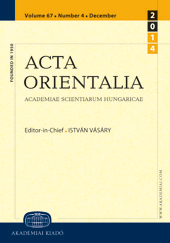Hungary and the Levantine trade in the 14th–17th centuries
Hungary and the Levantine trade in the 14th–17th centuries
Author(s): Zsigmond Pál PachSubject(s): Economic history, 15th Century, 16th Century, 17th Century, The Ottoman Empire
Published by: Akadémiai Kiadó
Keywords: economic history; Levantine trade; international trade routes; supply of the Hungarian markets with “maritime goods” or “Turkish goods”;
Summary/Abstract: Scholarly literature on the late mediaeval and early modern Levantine trade has it that in the 14th–15th centuries eastern spices and other “maritime (Levantine) goods” arrived in Hungary not from Venice, but mainly from the Dalmatian towns of the Adriatic Sea, through the so-called route of Zara (Zadar). The author of this article tries to point out that out of these two western trade routes the so-called Venezianerstrasse connecting Tarvisio and Vienna from where the eastern goods were transported to Hungary was far more important. Then he demonstrates the existence and significance of the spice route leading from the Black Sea via Wallachia to Transylvania and then further to the interior of Hungary. Thirdly, he establishes that at the turn of the 15th and 16th centuries the quantity of pepper imported from the direction of the Black Sea was four-and-a-half to five times as much as the pepper arriving from the direction of the Adriatic Sea. In the second part of the article, the author outlines the crucial changes in 16th-century commerce. The trade of eastern spices from Wallachia via Transylvania to Hungary continued for a while, but then gradually diminished and finally ebbed away in the second half of the century. They were replaced by “Turkish goods” (different cotton and silk fabrics, yarns and leather ware) which originated from the Ottoman Empire and not from the Far East. Simultaneously, along with the revival of the Levantine spice trade of Venice, the Venezianerstrasse also regained its significance and the pepper import from Vienna to Western and Northern Hungary was also restored. At about the same time, a new and abundant trade route opened up towards Buda from Constantinople through Belgrade — mainly with new (Muslim and Orthodox) mediators. The various spices and “Turkish articles” arrived mainly on this route, a part of which travelled further west (in Habsburg Hungary and Vienna as well). By the middle of the 17th century a radical turn had taken place in international spice trade: from that time onward, eastern spices were transported to Hungary and further to Vienna not from Constantinople, but the other way round, they arrived from Vienna through Hungary to Constantinople.
Journal: Acta Orientalia Academiae Scientiarum Hungaricae
- Issue Year: 60/2007
- Issue No: 1
- Page Range: 9-31
- Page Count: 23
- Language: English
- Content File-PDF

